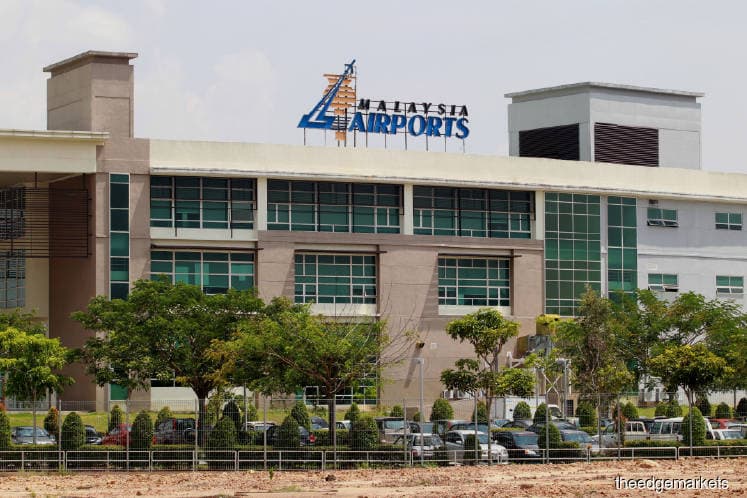
This article first appeared in The Edge Malaysia Weekly on October 21, 2019 - October 27, 2019
THE signs are unmistakeable — the government is on a collision course with the Malaysian Aviation Commission (Mavcom). And with that comes renewed and unwelcome uncertainty for Malaysia Airports Holdings Bhd (MAHB) shareholders.
At an investors’ forum in Kuala Lumpur last Thursday, Transport Minister Anthony Loke gave those in attendance a couple of key takeaways.
First, the much-anticipated regulatory asset base (RAB) framework due to kick in from January 2020 is not the final word. Instead, the ministry is already looking at alternative models for the future development of airports.
Second, the government is also considering to restructure the aviation sector’s regulatory bodies, which at present comprises Mavcom and the Civil Aviation Authority of Malaysia. That could mean the consolidation of both into a single entity, among several possibilities.
The announcements add to a bombshell dropped by Loke in August whereby the minister said the passenger service charge (PSC) would be cut for international travellers from RM73 to RM50.
The cut is seen as a win for AirAsia, which had lost a court battle against MAHB for not collecting the RM23 difference in PSC as the airline group felt it was unfair for passengers who used klia2 to pay the same rate as those using KLIA. AirAsia had also railed against Mavcom over the matter.
Thus, the cut is seen as a slap to Mavcom, which had introduced the RM73 PSC for international departures to non-Asean destinations as part of its PSC rebalancing exercise.
The net effect of the latest announcements is that three years’ worth of hard work to develop the RAB and implement it could go up in smoke if the government decides to go back to the drawing board.
Transport minister Loke did not respond to a request for comment on the plan moving forward.
For MAHB shareholders, the signals sent by the minister brings renewed risk to the company’s returns and their own investment returns.
On Thursday, as fund managers listened to the minister’s messages, MAHB’s shares plunged by 66 sen, or 7.6%, to RM8.04, the biggest fall since November last year. The selldown erased RM1.09 billion in MAHB’s market capitalisation.
Its share price had been climbing over the previous seven months and the selldown could have also partly been driven by profit-taking.
That said, the RAB would have provided an earnings certainty for MAHB by proposing a nominal pre-tax weighted average cost of capital (WACC) of 10.88%.
Note that MAHB had requested upwards of 12%. Mavcom’s formula to calculate the WACC is built on the capital asset pricing model and uses multiple assumptions as input, including a 3.90% risk-free rate, 24% tax rate (which is the current corporate tax rate in Malaysia), 5.46% cost of debt and 12.39% cost of equity.
It must be noted that the WACC return rate is not directly comparable with any other financial metric often used to measure a company’s performance.
However, having a set WACC rate at 10.88% — bringing a certainty that is chiselled in stone — would have been a relief to MAHB shareholders who had been seeing pressure on returns over the years.
As a snapshot, MAHB’s return on equity (ROE), return on assets (ROA) and return on invested capital (ROIC) had been seeing some pressure over the past decade, according to data tracked by Bloomberg.
In 2008, for example, ROE was 9.85% and fell to as low as -0.23% in FY2015 and 0.16% in FY2016 before recovering to 8.45% in FY2018. ROA was 6.46% in 2008 and 3.27% in FY2018. Meantime, ROIC fluctuated from 8.56% in 2008 to as low as 1.06% in FY2014 but recovered to 8.65% in FY2018.
(To be fair, the data captured by Bloomberg does not adjust for MAHB’s international ventures versus domestic operations, as well as other exceptional charges and items over the years.)
MAHB manages 39 airports across Malaysia, of which five are international airports. Another 16 are domestic and the remaining 18 are loss-making short take-off and landing airfields in rural areas.
The transport minister’s office did not respond to a request for comment.
The potential scrapping of the RAB carries multiple implications. First, it means MAHB and the government will have to continue operating based on the existing operating agreement (OA) until a new OA is finalised, noted Nomura Research in an Oct 18 note.
This means a continued financial burden on Putrajaya, as the current OA requires the government to pay the difference between the actual PSC collected and the benchmark PSC rate set by the regulator.
“Compounding the uncertainty further, waiting for Mavcom or the Ministry of Transport to formulate their alternative framework for determining aeronautical charges could be an additional overhang on the share price,” said Nomura Research.
“Furthermore, the new OA/alternative model could also end up being worse for MAHB compared with the existing agreement, resulting in MAHB not pursuing the airport concession, paving the way for other new players,” the research house added.
Second, the latest remarks by the minister throws renewed uncertainty in terms of MAHB’s planned capital expenditures, particularly for high-priority airports such as Penang and KLIA, which are bursting at the seams.
For perspective, the KLIA main terminal saw 28.1 million passengers last year. When built in 1998, its capacity was 30 million. In a previous interview with The Edge, MAHB said that while short-term adjustments can be made to raise that capacity to 33 million, eventually an expansion will be on the cards.
A prolonged regulatory overhang in wait for an alternative model to be developed and implemented could see MAHB’s capital expenditure plans being deferred. For passengers, this may mean the quality of airport service levels could suffer.
Save by subscribing to us for your print and/or digital copy.
P/S: The Edge is also available on Apple's AppStore and Androids' Google Play.